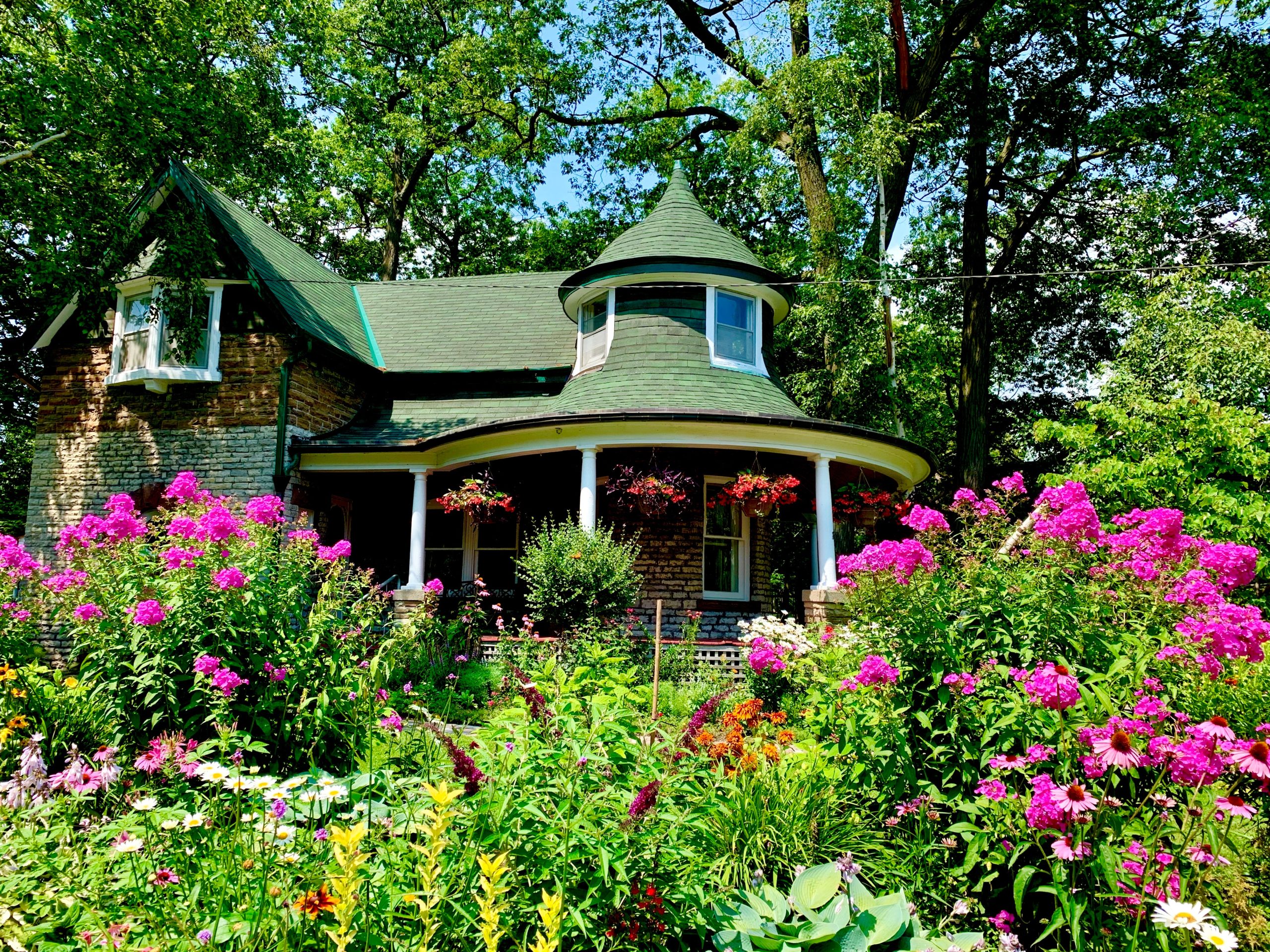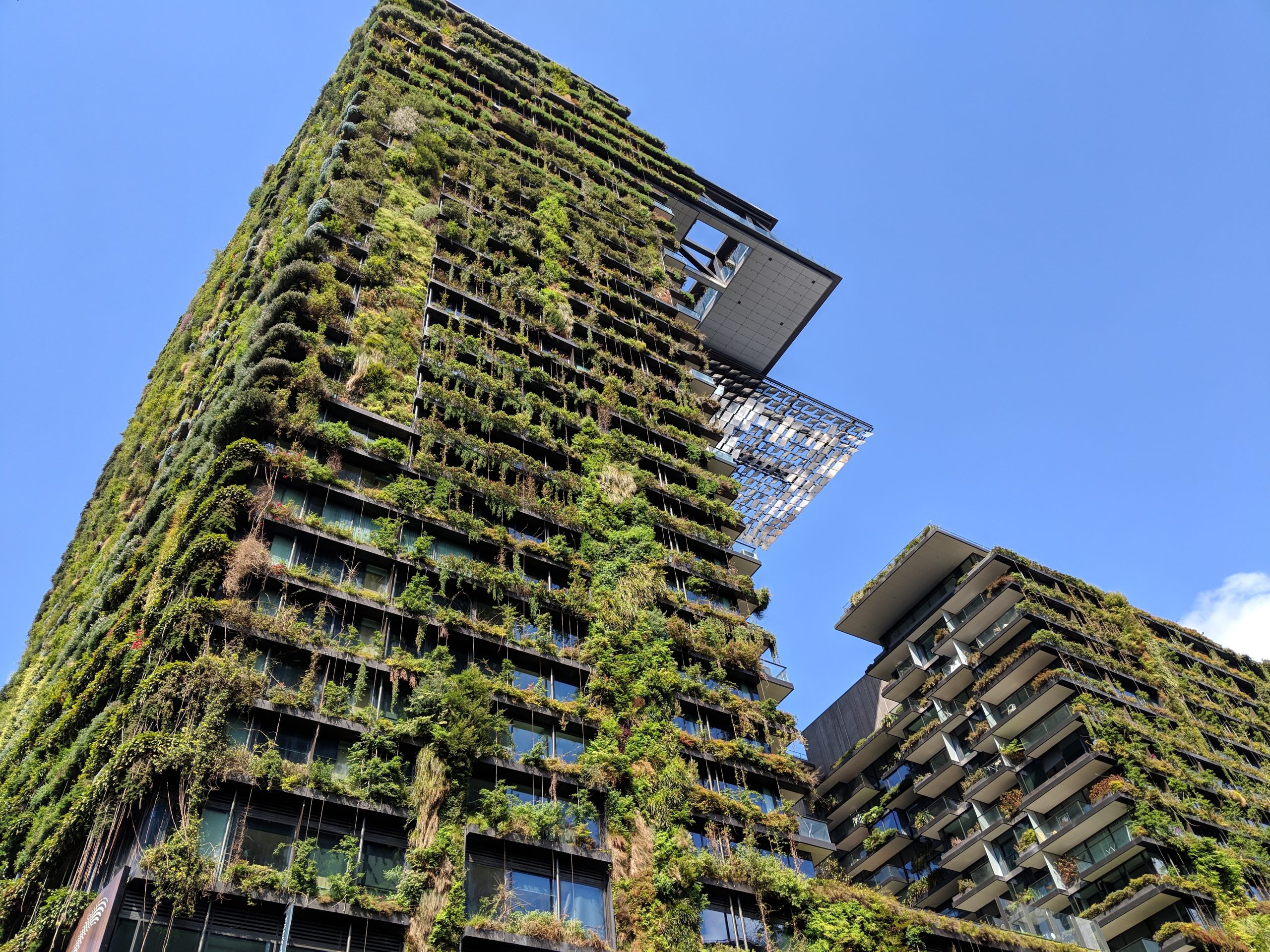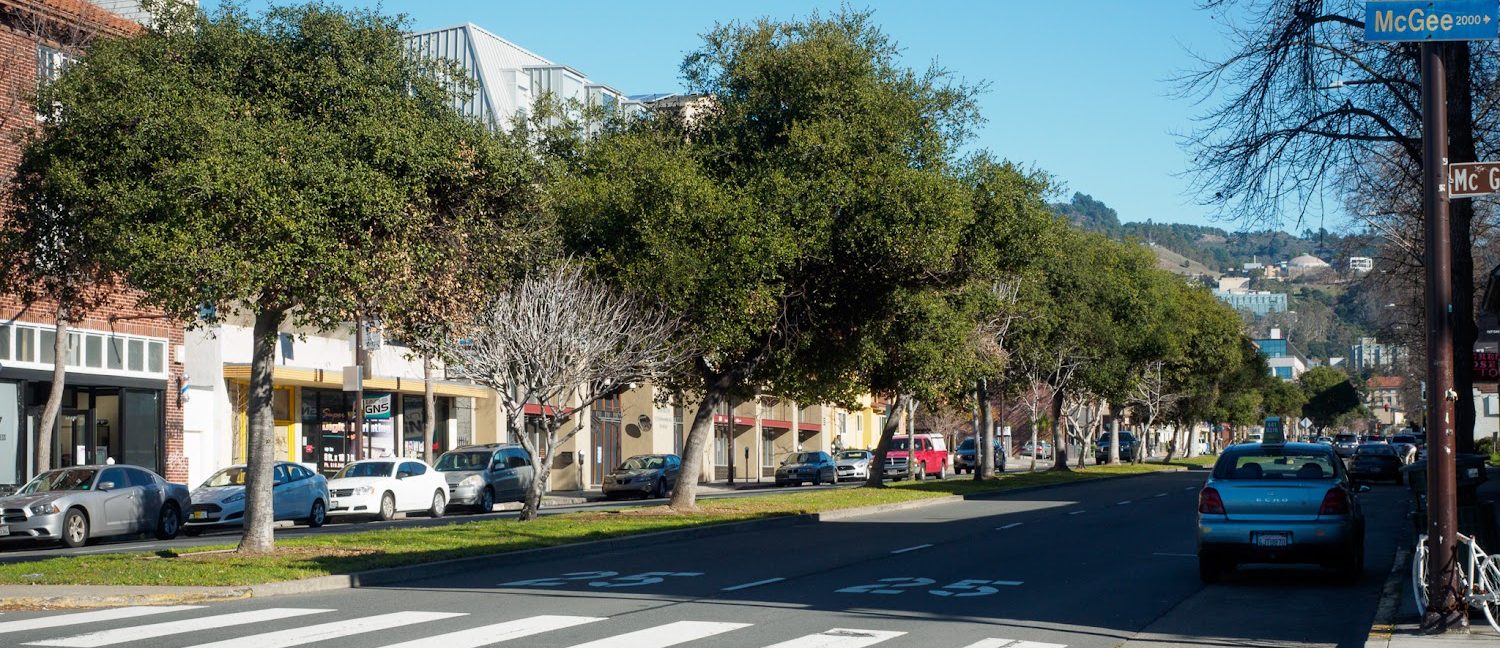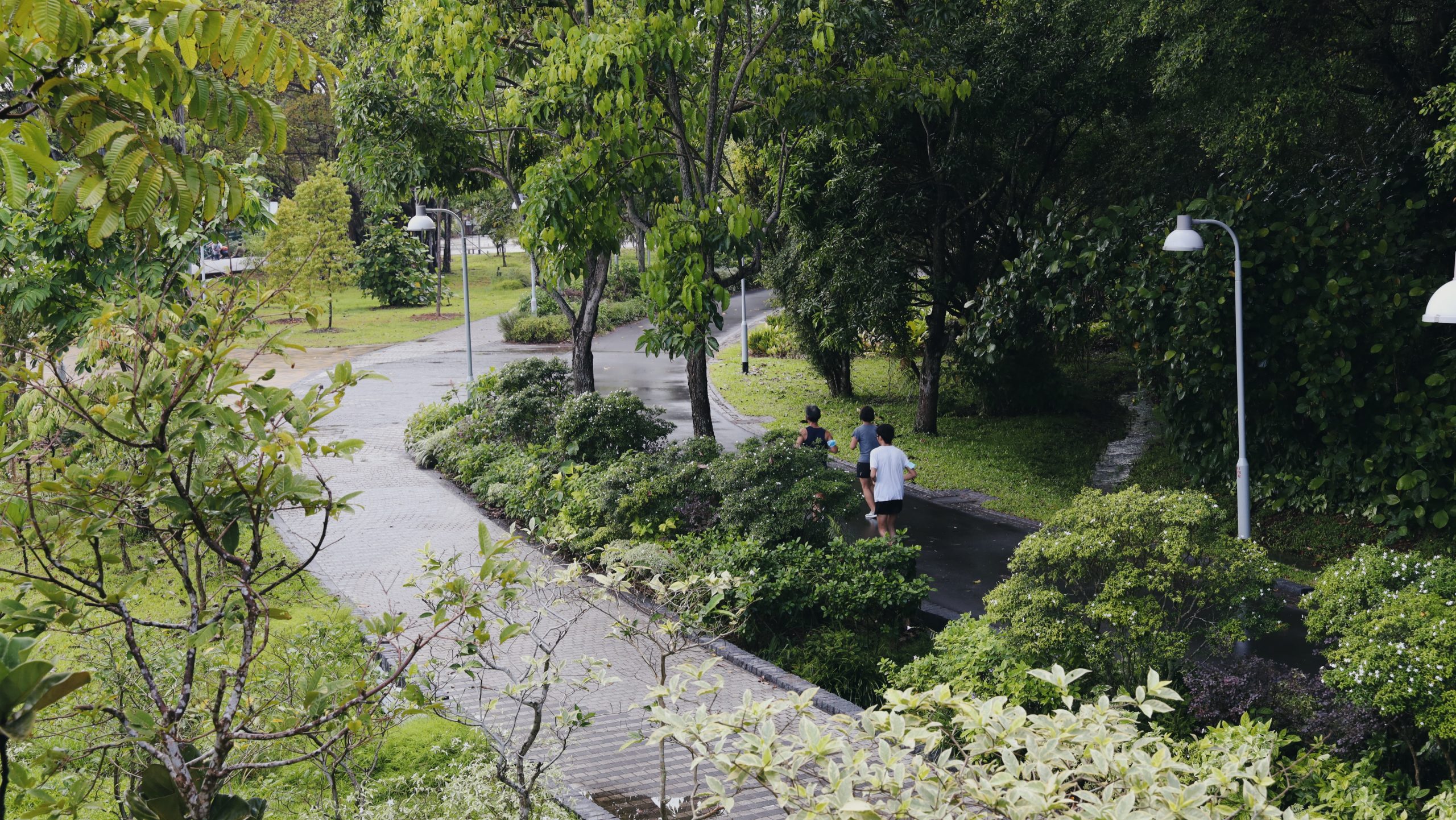Matrix Quality
Image credits: Robin Grossinger
The urban matrix is the area around and between urban patches and corridors.
Matrix quality refers to how well urban areas support biodiversity in between the patches and corridors. Areas with more street trees, bioretention areas, green roofs, and backyard gardens are better able to support native plants and animals. While individual habitat elements in the matrix are often too small to support large wildlife populations themselves, they can support wildlife movement and foraging in cities. Matrix quality improvements can be made around patches to increase the effective patch size, along connections to increase the effective corridor width, between patches to increase connectivity, or clustered to form habitat complexes.

Relevant Planning and Design Strategies
The Urban Biodiversity Framework identifies seven key landscape elements that, when integrated together into urban design and planning, have the greatest chance of supporting the greatest number of species. Each element is related to various strategies from the urban planning, site design, and detailed design chapters.
- All Strategies
- Urban Planning
- Site Design
- Detailed Design
MATRIX QUALITY
Matrix quality refers to how well urban areas support biodiversity in between the patches and corridors. Areas with more street trees, bioretention areas, green roofs, and backyard gardens are better able to support native plants and animals. While individual habitat elements in the matrix are often too small to support large wildlife populations themselves, they can support wildlife movement and foraging in cities. Matrix quality improvements can be made around patches to increase the effective patch size, along connections to increase the effective corridor width, between patches to increase connectivity, or clustered to form habitat complexes.
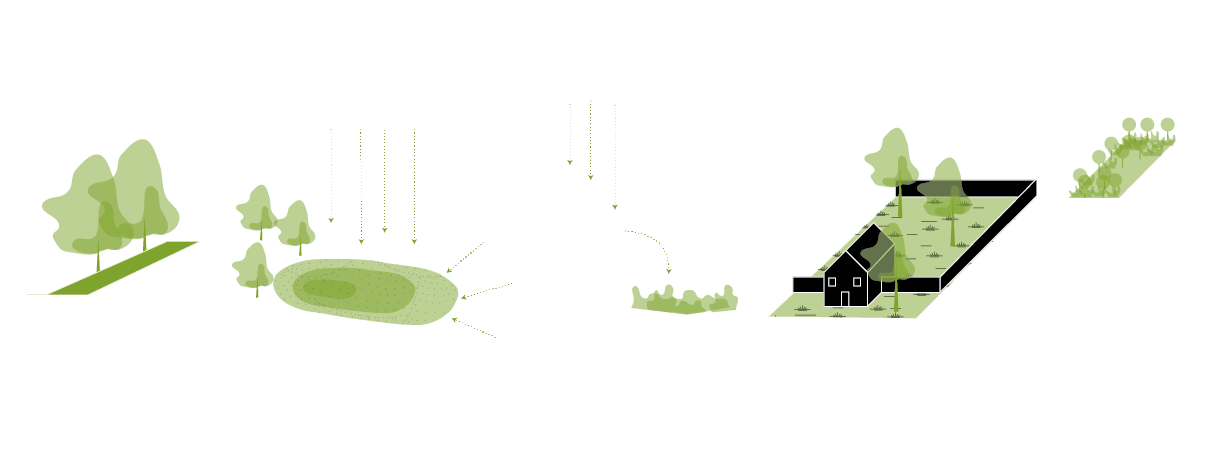
ACTIONS YOU CAN TAKE
Urban forests can harbor relatively high levels of biodiversity. The biodiversity support provided by trees increases with tree size, as large trees provide more food for wildlife, such as flowers, pollen, and nectar, and are more likely to have hollows and cavities that give animals places to nest or hide. Beyond supporting individual species, urban trees play a central role in fostering a diverse urban ecosystem that is resilient to stressors and a changing climate. Cities can strategically plan for street tree plantings through the development of an urban forest master plan.
This action also supports: Connections
Related precedent: Nature Ways – Singapore
Creating green roofs by retrofitting existing buildings or installing with new construction can create new resources in heavily developed areas that otherwise would be hard to convert to open spaces. Cities can also green urban environments vertically by building green walls and terraces. With thoughtful planning, these features can add important ecological benefits and services, such as provisioning food and habitat for wildlife and cooling buildings and neighborhoods.
This action also supports: Patch Size
Building green infrastructure to manage stormwater can have biodiveristy co-benefits, particularly when the features are designed to support biodiversity. Features such as bioswales, flood detention basins, and rain gardens can enhance local ecology by including plant palettes specific to particular habitat zones. Bioswales can incorporate trees, and flood detention basins can be combined with wetland restoration to re-create locally rare habitat types. In some cases, coordination among city programs can be achieved using policy frameworks, and stormwater permitting processes and regulatory structures related to water quality improvement can be written to include targets for urban greening that encourage green infrastructure projects.
Related precedent: Caribbean Green Ave – Sunnyvale, CA, USA
Encouraging the planting of native species in private gardens can increase or even create new ecological value on private lands. Native species can be promoted though engagement with private landowers, community members, and incentive programs. Programs can also incentivize rain gardens, turf replacement, installation of nest boxes, and other modifications that are important for supporting local biodiversity.
This action also supports: Native Vegetation, Special Resources, Management
Related precedent: Green Hairstreak Corridor – San Francisco, CA, USA
Pocket parks are very small and often heavily used parks, designed to support an immediately local neighborhood along routes with heavier pedestrian traffic. Thus, on their own, pocket parks do not provide significant ecological value. However, when appropriately sited and designed, pocket parks can enhance the quality of the urban matrix, creating habitat, food resources, and connectivity for wildlife between larger patches.
This action also supports: Patch Size
Related precedent: Green Hairstreak Corridor – San Francisco, CA, USA
Cities can incentivize private landowners and commercial or industrial property owners to implement matrix quality improvements, particularly where financial resources are a significant barrier. Incentive programs can motivate both small and large landowners to implement lawn conversion and native landscaping, rain gardens, green roofs, and other biodiversity support actions.
Urban greening initiatives can also be led by policies and planning. Cities can develop green infrastructure plans to guide the installation of bioswales and rain gardens to reduce contaminants in urban runoff, or climate action plans to mitigate greenhouse gas emissions and adapt to a changing climate. City general plans, green infrastructure requirements, urban forest master plans, parks master plans, and other guidance documents regularly update policy for many of the key features in a biodiverse city. These planning and policy efforts could benefit from incorporating biodiversity planning as a key goal and providing biodiversity-specific recommendations.
This action also supports: Connections, Native Vegetation

